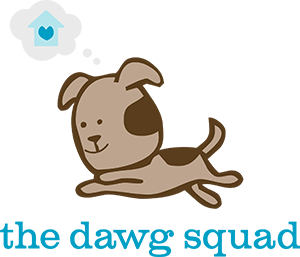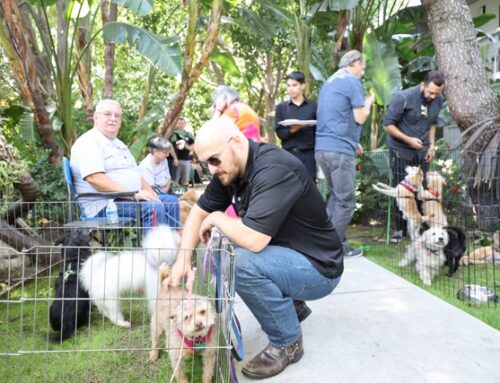The story is all-too-familiar. Fido has been a part of the family for years and suddenly your child experiences an allergic reaction to your beloved family pet. Rashes, plugged nose, itching — it’s unbearable to see a child suffer. As soon as you see it happen you want to immediately find the treatment that is best for rashes to help them. Most people faced with this situation make the heartbreaking decision of splitting up their family. Ultimately, the one that loses the most is the family pet who is suddenly and tragically displaced from his/her family.
Sadly, this is an all-too-common scenario and it seems that the default response by the family doctor is simply to remove the irritant, aka your dog. This was the situation for a family that contacted the Squad to help rehome their dog. When her child started breaking out in rashes the family doctor told Mom that the dog had to go.
We suggested that Mom get a second opinion from another pediatrician and she agreed!
And lo and behold, the second pediatrician told Mom exactly what we hoped he would say – she could keep the family pet with a few small modifications to the family environment. He said as long as the allergic reactions were not severe, there is no harm to keep the animal in the home. The child would eventually become accustomed to the animal and grow out of the allergy. In the meantime, these steps could be used to minimize allergic outbreaks:
- Don’t let Fido sleep in your child’s room
- Have your child wash his/her hands after petting or playing with Fido
- Bath Fido regularly (once a month) to help control dander
It has been about a month now and by following these simple steps, the child’s outbreaks have not only become less frequent but have subsided. And most importantly, her family is intact!
LOS ANGELES – How much do we really question the ingredients in our pet’s food? Many dog owners will wonder things like can dogs eat orange or other fruits, but very few will actually do the research to find out if these foods are good for our dogs. Like most pet guardians, we assume that when we purchase an expensive food, that we are assuring the best possible nutrition for our pets. But how much do we really know about the ingredients in our pet’s food and the possible implications to their health?
Popular Food Brands May Not Provide Adequate Nutrition
Some of the most popular brands do not provide adequate nutrition and worse, may contain ingredients that could harm our pets. Over time, some of these ingredients could cause liver damage, diabetes or even cancer. Unfortunately, many of the ingredients in question are perfectly legal for use in pet food so it really is a case of “buyer beware”. For that reason, we thought we would kick off a series on pet health and nutrition to help us all stay informed and make the most informed decisions when feeding our pets. Using appropriate foods and health supplements can be the difference between a happy, healthy dog and a dog that doesn’t live for as long as they could. With this in mind, now may be a better time than ever to consider CBD for Pets, which is thought to have some great health benefits for animals as well as humans.
Cheap Fillers
Pet food manufacturers often use cheap fillers, which contain no nutritional value. That’s why a lot of pet owners turn to raw pet food to give their dog the nutrition they need. For example, white rice is a cheap filler ingredient that is commonly used in dog foods. All of us have enjoyed a delicious bowl of white rice for dinner. I also have several friends who routinely add white rice to their dog’s dinner without any adverse effects. This seemingly harmless staple, however, can cause blood sugar disorders in dogs, just as it does in people. The only difference is that dogs are more susceptible to the detrimental effects of refined white rice because their digestive systems require far more protein and fewer carbohydrates than humans. So why take the chance.
Additional fillers often used in dog foods include wheat gluten, corn gluten, soy, corn bran, corn cellulose and many more.
For a more complete list of ingredients to avoid and a detailed explanation of each item, check out The Dog Food Project.









Stay In Touch